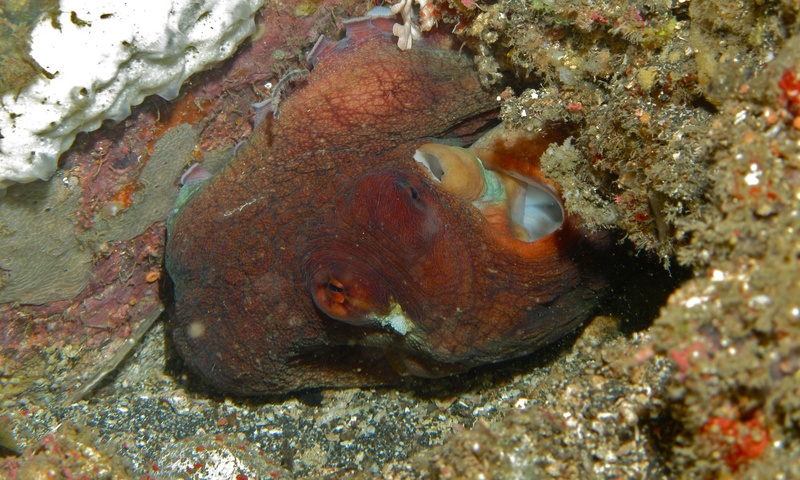|
| 질의: common blue | 결과: 417번째/981 | |
day octopus (Octopus cyanea)
| 제목: | day octopus (Octopus cyanea)
| | 올린이: | Wiki Photos (---@---.---)
| |

| 해상도: 4416x2649
파일크기: 4687526 Bytes
촬영일: 2009:10:15 05:03:52
사진기: Canon PowerShot G10 (Canon)
F number: f/4.0
Exposure: 1/60 sec
Focal Length: 9049/500
등록시간: 2017:06:14 12:26:54
|
Nudi Retreat I, Lembeh Strait, Sulawesi, INDONESIA
Date 15 October 2009, 05:03
Source Day Octopus (Octopus cyaneus)
Author Bernard DUPONT https://www.flickr.com/people/65695019@N07 from FRANCE
Source: https://commons.wikimedia.org/wiki/File:Day_Octopus_(Octopus_cyaneus)_(6072964169).jpg
The big blue octopus or day octopus (Octopus cyanea) is an octopus in the family Octopodidae. Octopus cyanea is found on reefs and in shallow waters in the Indo-Pacific. Its range extends from the Red Sea, the East African coast, and Madagascar, to southeastern Asia, Oceania, and as far as Hawaii.
|
댓글 |
|---|
| | 손님 |
|
Scientific Name: Octopus cyanea Gray, 1849
Common Names: Day Octopus, Big Blue Octopus, Cyane's Octopus
Synonyms:
Callistoctopus magnocellatus Taki, 1964
Octopus cyaneus Gray, 1849
Octopus glaber Rüppell, 1920
Octopus horsti Joubin, 1898
Octopus marmoratus Hoyle, 1885
Polypus herdmani Hoyle, 1904 |
^o^
동물그림창고 똑똑전화 누리집
^o^
|
|
|

